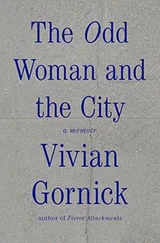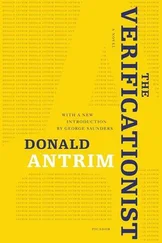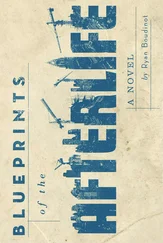“Mom? Mom?”
There she was, half a block behind, standing in the heat, lighting a cigarette with a shaking hand, looking lost.
“Mom, are you all right? Do you want to rest a minute?”
“No. I’m fine. I don’t need to rest. Let’s get to the gallery. How far is it, Don?”
“It’s not far. It’s up here. Can you make it? Do you want me to carry your portfolio?”
“No.”
“Have you seen a doctor, Mom?”
“I have a doctor at home, Don. Let’s get to the gallery. They’re expecting me. I have an appointment.”
But what kind of appointment? When we finally got down the block and through the door, the woman behind the front desk recommended that my mother leave slides and a resume and wait to be contacted. This is normal-enough procedure, but my mother, who had garrulously promoted the narrative of her imminent ascension, took it as a blow. She stood before the receptionist’s desk. I was terrified that she would make a scene. I felt her anger and her humiliation, and my own humiliation. I paced around the gallery space, then sneaked out and paced some more, back and forth, on the sidewalk. It was a while before my mother and F. came outside. F. encouraged my mother not to get upset. But my mother had tipped into one of her bitter, bewildered moods.
The walk to F.’s house was only a few blocks. Nevertheless, it was too much to ask of my mother, so we hailed a taxi. When we got to F.’s, we decided to have an early supper. There was leftover fried chicken in the refrigerator, and we could eat outside. F.’s street was a dead end and got little traffic; the residents used the street and the sidewalk as a kind of communal square, and they occasionally set up chairs and tables beneath the old trees that formed a low canopy overhead.
It was evening, and the air was warm and still. The three of us sat in a circle, eating with our hands. For years, my mother had had the habit, in public and in private, of announcing, as an artist, her identification with me. She believed that we understood each other, and were fundamentally alike in our alienation from the noncreative world. “We don’t need to worry about what other people think, Don,” she might say. And she might add, “We don’t fit in.”
My mother may have made a few such claims that night when she, F., and I sat down to dinner. I don’t remember. All I could do was watch her eat.
She sat facing me. She took large bites, and bits of food spilled down her front as she chewed. She ate, it seemed to me, without awareness of herself; and the impression she gave was of something gone wrong, as if perhaps, at age sixty-four, she were making her first attempt to learn table skills. She wasn’t a toddler, though; she was sick, and denying her sickness. In four months, she would learn that she was dying.
I looked away. I was a man in his forties, afraid of his mother. Or maybe I was afraid for her. I looked again, and we made eye contact, and it crossed my mind that she was a crazy person wearing crazy clothes of her own crazy design, with a crazy person’s hairdo atop a head brimming with strange hallucinations in which she conversed with a crew of spirits that included the Virgin Mary and Jesus himself. These spirits related to her as a peer. The fact of their communications reinforced her belief in herself as spiritually and emotionally superevolved, and this belief, in turn, supported her image of herself as a heroine on a journey. In this romantic-journey scenario, her failures and losses in life were grand successes, insofar as they represented trials too arduous for anyone but a hero to overcome.
In spirit, the kimono reflects its maker’s predicament. My mother’s entire relationship to fashion was one of passionate ambivalence. Her mother had pushed her into vocational home economics in both high school and college, and she later envied my father, a teacher of literature, his exalted access to higher things. She never wore the French and Italian designs that she showed her students in pictures during those years when she had an academic job. She liked to drive to the Neiman Marcus store in Bal Harbour, but she rarely, if ever, bought anything. She said that she could not afford Chanel and Dior, but I suspect that the truth was more complex. The coats and hats and dresses she most admired represented for her, I think, a world beyond her compass. In the sixties, when she and my father were beginning their first divorce, she led a group of fashion students on a European tour, and later she took a few trips overseas and to New York, but these places remained faraway lands. In the seventies, after remarrying my father, she got her Ph.D. from the College of Home Economics at Florida State University — her dissertation was titled “Exploratory Study of Quality Control Problems and Procedures in the Manufacture of Junior and Misses Fashion Apparel in Dade County, Florida”—but she never felt that this achievement was appreciated by her family or her colleagues. It would be only a short time before she’d turn her back on teaching. In the late eighties and the nineties, her Peace Goods years, she began exploring popular alternative philosophies, most of which were formed, it seemed to me, from blends of astrology, Jungian psychology, Native American mythology, and various recovered-memory and past-life regression theories and therapies — the ad hoc religions of the New Age. These philosophies essentially gave my mother permission to imagine the world as a place of her own making. She never, I sometimes think, stopped being a child.
The world depicted on the kimono is the world inhabited by that child, a world full of storybook animals waiting to accompany the heroine on her journey to forever. To see her wearing it, however — and I recall that I did, one day at her house in North Carolina, though I wonder, sometimes, whether I only imagined this — was to experience its power. My mother was tall and sedentary, and in her later years she ate poorly. Drinking and smoking had broken her down. Her face looked worn and, as my father had always said, tired. That day in Black Mountain, she put on the robe, drew it close around her, and stooped beneath the low ceiling in her living room, the room partly taken up with the worktable she’d carted north from her shop in Miami.
The kimono fell on my mother to a place between her hips and knees. The butterfly’s antennae rose in the air behind her head, and drew attention to her hair, which looked brushed to appear as if it had not been brushed at all, then hurriedly sprayed in place. She had on glasses; their frames were big and buglike; combined with the antennae and the wings, the effect was almost comical. Because I knew that I had no choice other than to approve, I told her that the kimono was amazing, and she asked me if I truly thought so, and I said, “Yes, yes, absolutely.”
I imagine her turning, showing me the back, like a lover displaying a dress that delivers a frank promise of sex. And it occurs to me that the butterfly was a parasite — that its wings were too small to lift and carry both her and all the things attached to the robe, the sachets and the man in the moon and the feathers and jewels hanging from ribbons and strings. When I see her this way, in memory, with the indigo and blue sashes dangling beneath her arms, and the cat like a badge over her heart, and her antennae sticking up behind her head, I become grateful to her father, who, however he may have failed her when she was a little girl, protected her and insured her a home in the last years of her life.
In the seventies, my mother made a suit for my father. We were living in Coconut Grove at the time, in a house that had formerly been inhabited by a CIA agent. The suit was handmade in the traditional manner, with recurrent fittings leading to the drawing and redrawing of patterns, and the painstaking construction of a paper-and-muslin facsimile. In proper tailoring, enormous labor is expended before the valuable fabric — in this case, a dark-brown wool herringbone from a Scottish mill — is ever cut. The tailor observes the posture, mannerisms, and physical idiosyncrasies of the man who will wear the finished garment. Subtle information about social standing, power, and ambition is communicated through the wearer’s bearing, and through choices in material and style: pinstripes or plaids; notched lapels or peaked; side vents or center; and so on. The tailor indeed takes the measure of the man, who begins to feel the pride that comes with wearing clothes cut and sewn specifically for his body, clothes intended to carry him into the world as a confident and vital participant in society.
Читать дальше












